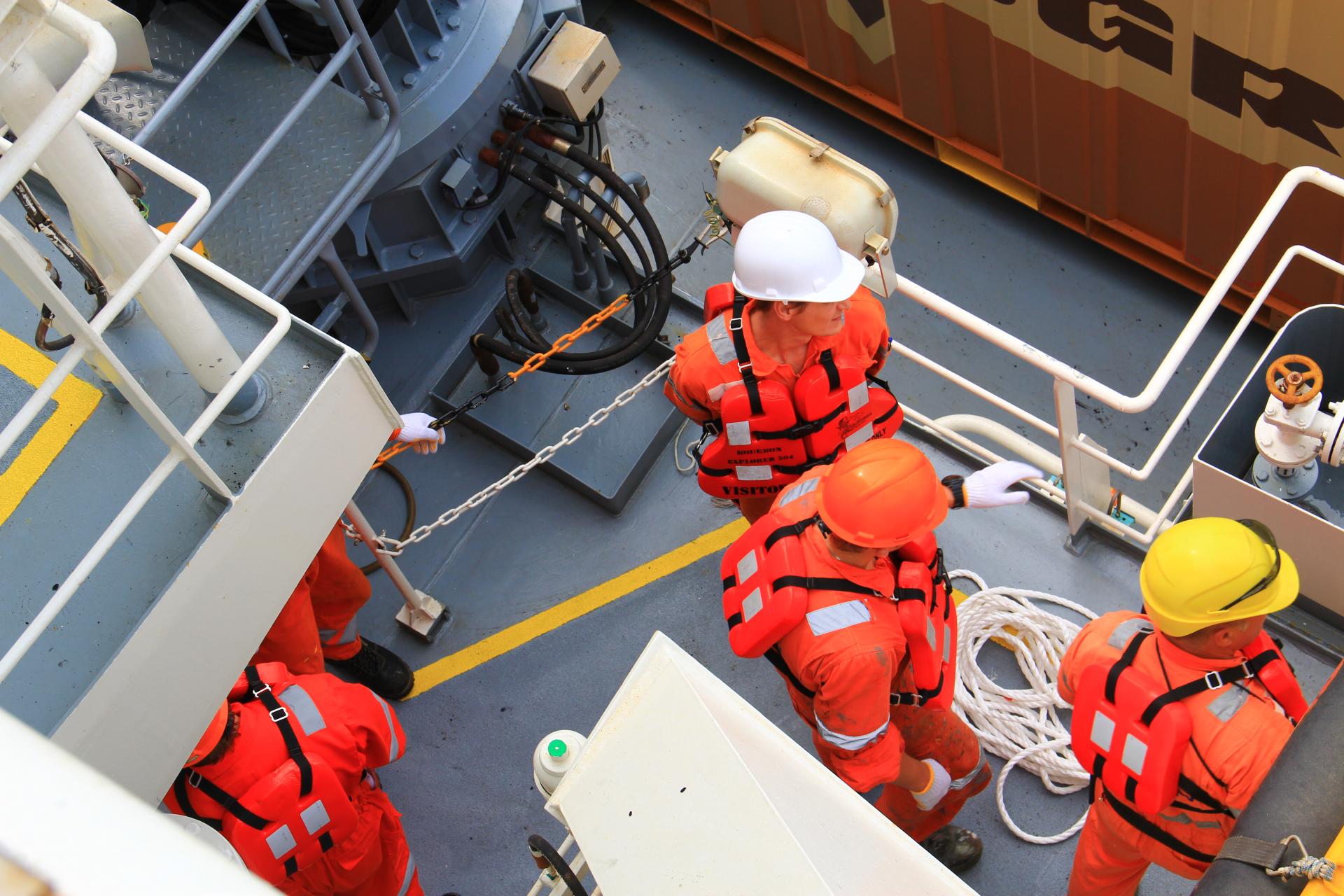
Safety: onboard emergency drills
Safety is our top priority. Crews of BOURBON vessels are well-prepared to face emergencies through training sessions followed by full-scale drills. Case in point: fire.
The crew of the Bourbon Liberty 247 is out in full force at the assembly area: a fire alarm has been triggered, there isn't a minute to lose. Each crew member has a clearly defined role and must therefore follow procedures practiced in the training sessions conducted over the previous weeks.
"Each vessel conducts training in onboard fires at least once a month, in order to maintain the the team's skills and capabilities in terms of automation, which are very useful in case of a crisis during emergency situations. " explains Denys Berestennikov, captain of the vessel. "A good command of the respective tasks and ongoing training can save valuable time in an emergency. "
In particular, these training sessions make it possible to verify that the crew:
- knows the firefighting equipment and its location,
- is able to gear up quickly,
- is very familiar with the facilities,
- can locate the flaps used to cut the ventilation to facilities on fire.
" A good command of the respective tasks and ongoing training can save valuable time in an emergency."Denys BerestennikovCaptain of Bourbon Liberty 247
The fire drill: highly revealing
If training is essential for the crew to properly learn emergency procedures, drills are an overall review of the crew's knowledge of these procedures. They highlight any shortcomings, which are then corrected in training sessions. "During a drill, we see how long it takes the crew to gear up, to become operational. This allows us to measure the effectiveness of training," says Vincent Coquelet, HSE Corporate Manager. "If the overall drill highlights malfunctions, we know that under real conditions, with the added stress tied to the urgency of the situation, the response will not take place under good conditions. At the end of each drill, the debriefing is therefore essential, in order to find areas for improvement."
Back aboard the Bourbon Liberty 247. Roll call has been made, all seafarers are present, which means that none of them were injured or burned. The crew is divided into 4 teams, 2 fire brigades - main and backup -, a medical team and a bridge team.
While the fire brigade is preparing to enter the compartment on fire, the bridge team has alerted the DPA** of the vessel and the HSE Manager in order to provide additional assistance: medical, fire support from the other vessels in the area etc.
At the end of the drill, the captain will bring the team together for a transparent analysis of the onboard response. The next training sessions will help to correct what did not work this time.
* Safety Management System: transposition of regulations (ISM, SOLAS, STCW ...) and the BOURBON standard (OSM) through procedures
** Designated Person Ashore


